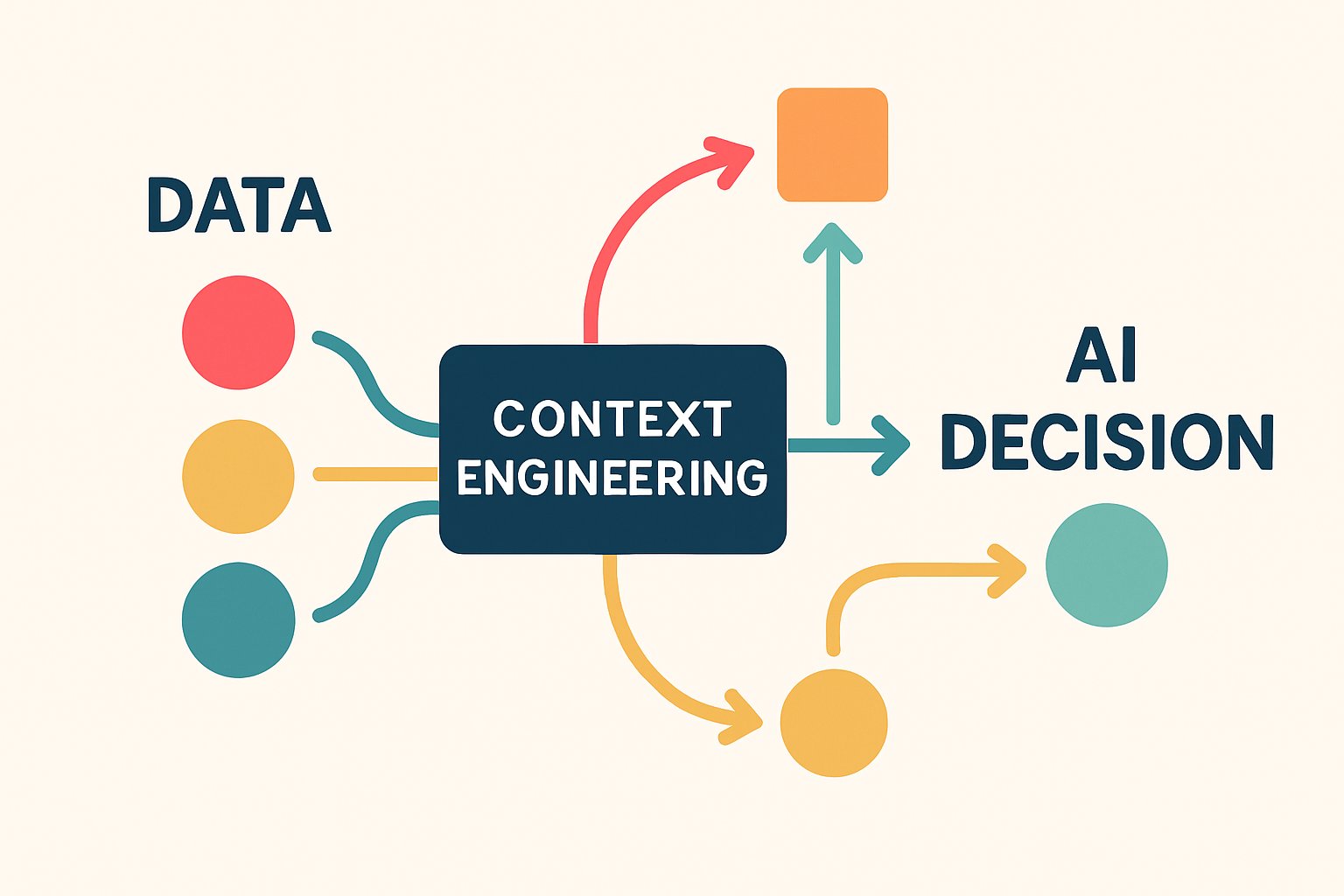
AI CERTS
2 days ago
Context engineering shifts AI design
Meanwhile, hiring managers seek professionals who can architect reliable retrieval, memory, and governance layers. The stakes are growing as vendors bake persistent context into every flagship model. This article explains why the discipline matters, how it works, and where to build expertise.
Rising Engineering Discipline Defined
Early prompt enthusiasts tuned single requests by hand. However, growing sequence lengths exposed limits in ad-hoc tuning. With context engineering, designers curate every instruction, tool output, and memory that reaches the language model. Gartner now defines the role as selecting, compressing, and validating multi-source inputs across an agent’s lifespan. Moreover, the discipline separates transient context from persistent memory, ensuring fresh inputs without losing continuity. Together, these principles create predictable behavior across long tasks. Consequently, market momentum is accelerating.

Market Adoption Forces Accelerate
Additionally, vendors moved quickly during 2025. OpenAI, Anthropic, Google, and Meta shipped memory primitives that developers can toggle with simple flags. These launches confirm that context engineering is now a product requirement, not a research novelty. Recent data underline the commercial pull:
- Precedence Research values 2025 generative AI revenue at USD 37.9 B.
- Mem0 reports 26 % accuracy gains from engineered context strategies.
- LinkedIn shows 300 % rise in roles requiring prompt design knowledge.
- Early adopters cite higher completion rates for agentic workflows.
Consequently, brands rolling out agentic workflows cite higher completion rates when context is engineered. These numbers highlight rising demand. Therefore, technique mastery now drives competitive advantage.
Core Design Techniques Explained
Designers apply repeatable patterns to manage information flow. For example, they write transient scratchpads to external storage, then retrieve only relevant snippets. Therefore, context engineering emphasizes a consistent write-select-compress loop. Moreover, good context engineering reduces hallucinations by grounding the model in verified documents. In contrast, prompt design optimizes wording inside a single request, while context governance shapes the entire environment. These patterns underpin robust agentic workflows across sales, support, and coding copilots.
Cost And Accuracy Gains
Mem0 showed 26 % accuracy gains and major token savings over naive full context. Consequently, teams can cut latency and cloud spend without sacrificing quality. These evidence-backed gains motivate new tools, which the next section reviews.
Leading Tooling And Vendors
Furthermore, open source frameworks such as LangChain, LlamaIndex, and RAGFlow supply ready blueprints. LangChain even maintains a dedicated context engineering repository featuring graphs, selectors, and observability hooks. Meanwhile, cloud providers expose API endpoints for personal memories and enterprise data isolation. Developers can validate mastery through the AI Prompt Engineer Level 2 certification. Tool choice now matters less than adopting disciplined practices. Nevertheless, risk awareness remains crucial.
Key Risks And Mitigations
Despite benefits, poor context engineering can expose private data or corrupt agent memory. However, governance frameworks mitigate these issues through validation tests and access controls. Effective context engineering audits should run alongside standard penetration tests. Gartner advises appointing context leads who monitor drift, privacy, and policy compliance. In contrast, unchecked memory features may trigger regulatory scrutiny, as recent chat launches demonstrate. Addressing these risks upfront preserves trust. Subsequently, organizations can focus on skills development.
Upskilling For Product Teams
Hiring trends already reflect the shift. Job posts increasingly bundle prompt design, retrieval tuning, and observability under broader developer skills requirements. Consequently, understanding context engineering differentiates candidates in a crowded AI labor market. Teams must train cross-functional staff in retrieval pipelines, memory architectures, and policy governance. Additionally, internal playbooks should measure token budgets and agent success rates after every change. Structured training accelerates deployment speed. Therefore, companies that invest now will lead the next wave.
Modern AI success hinges on disciplined information curation. Consequently, context engineering offers a proven path to reliability, efficiency, and personalization. Nevertheless, organizations must pair technique adoption with clear governance and robust developer skills. Moreover, leading tools and certifications already support rapid upskilling. Professionals ready to architect agentic workflows should deepen their expertise today.



